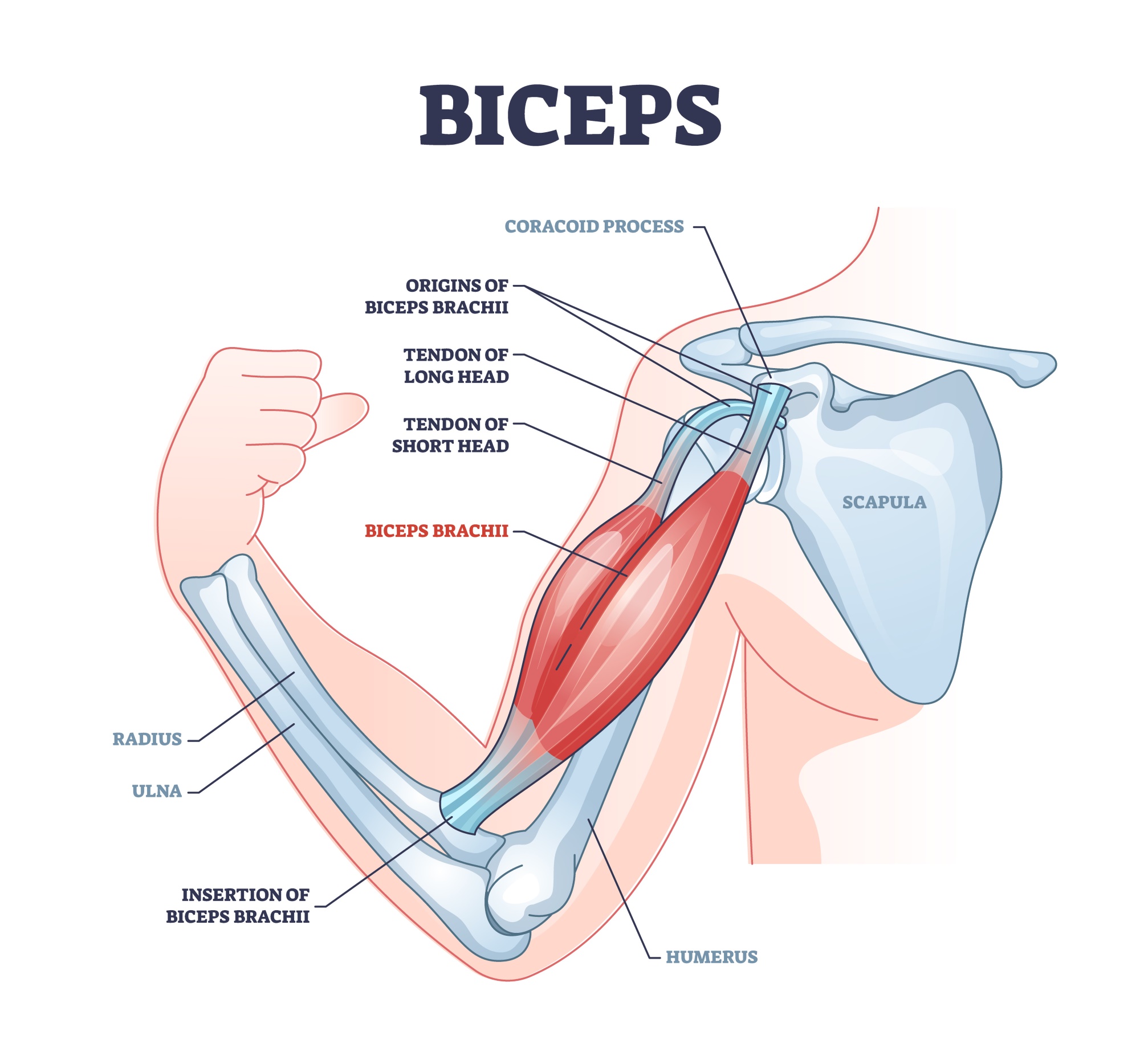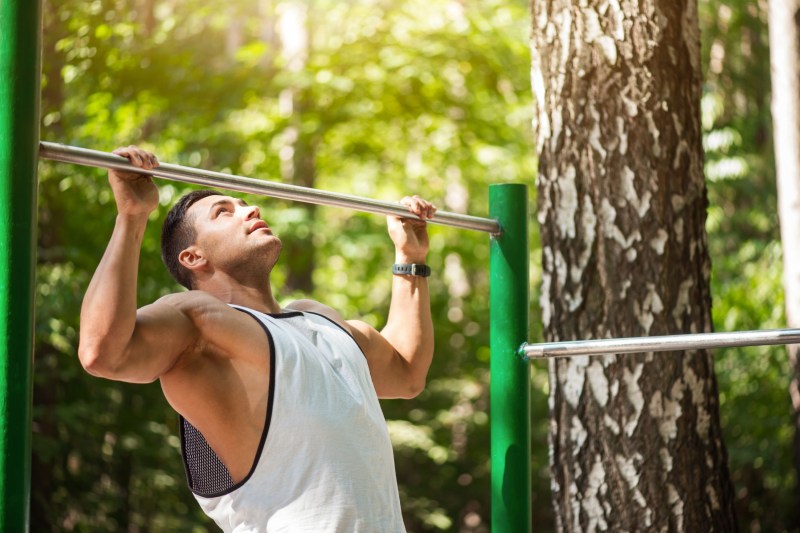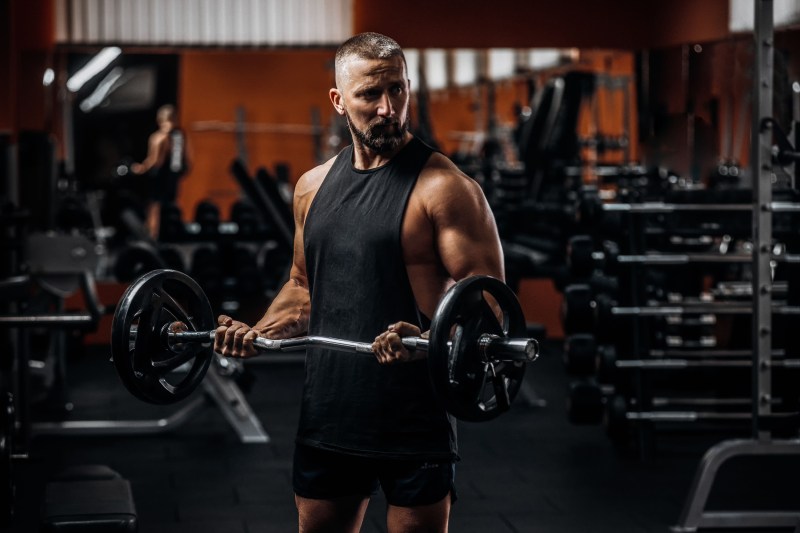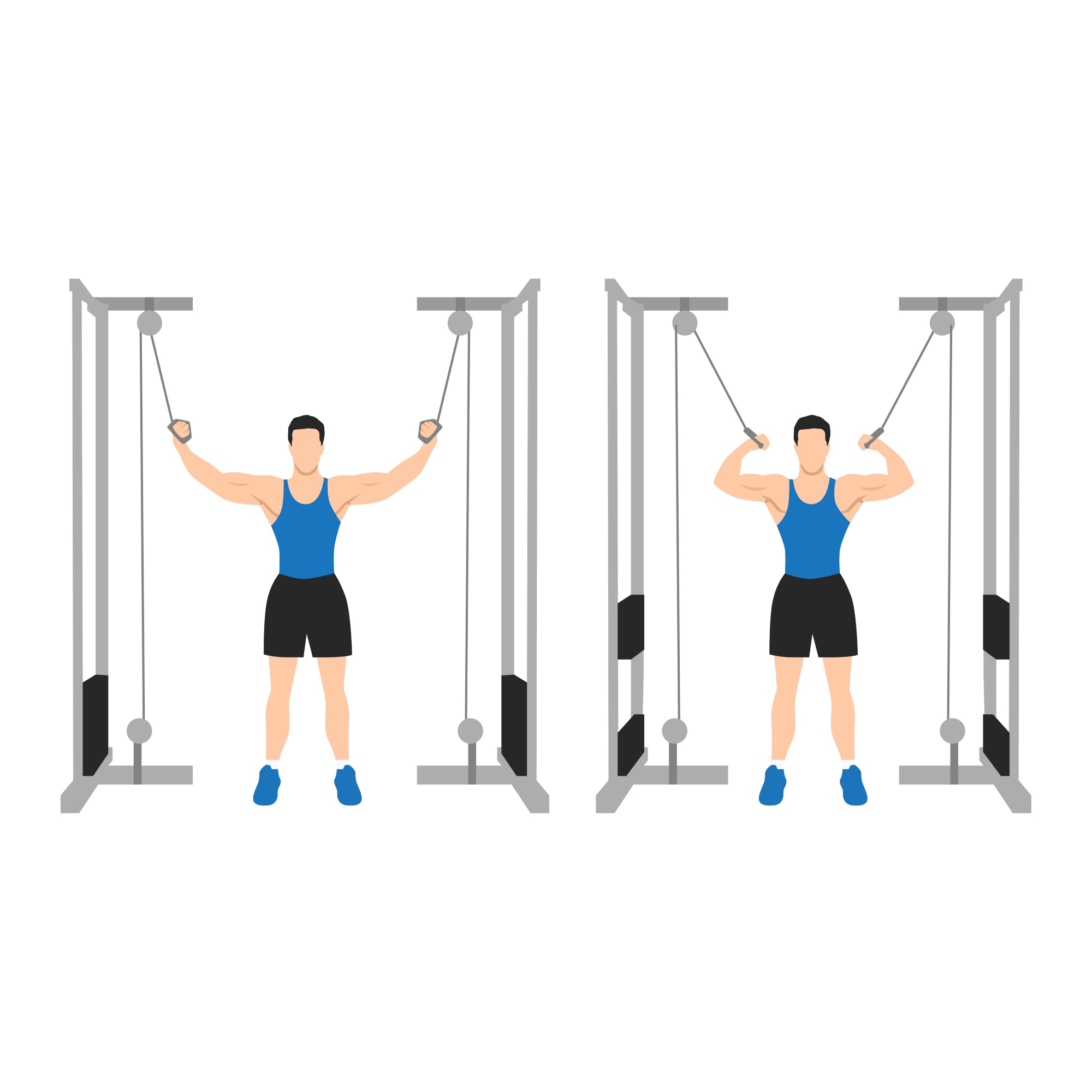
When you think about big muscles, the biceps are probably one of the first to come to mind. The biceps are crucial for arm strength and flexibility. Having stronger arms can lower your risk of injury during daily activities like exercising, carrying groceries, and pretty much any lifting, pulling, or throwing motion. Plus, many people work hard to achieve more bulging biceps and a sculpted physique. Here are the best bicep exercises to build mass.
What are the biceps?

The biceps is one of four muscles in the upper arm that are essential when lifting and moving your arms up, forward, and to the side. The biceps brachii is a bi-articular, double-headed muscle that helps you move your elbow and shoulder. Double-headed means that the muscle has two starting points called ‘heads’ in the shoulder. The biceps have a long head and a short head that join together to form a muscle mass in the middle of your upper arm. The other end of your biceps is connected at the elbow to the two bones of your forearm. Tendons are connective tissue that anchors your bicep muscles to your bones.
Interestingly, the number of muscle heads of the biceps brachii varies from person to person, and up to seven heads have been reported.
1. Chin-ups

Chin-ups are an excellent powerlifter compound exercise where you lift your entire body weight up until your chin is level with the bar. Research reveals that chin-ups work the same upper body muscles as pull-ups, but chin-ups have a more significant emphasis on the biceps and pectoral muscles, largely due to the grip position.
Top tip:
- You can add resistance bands as a counterweight to your body weight if you need assistance performing chin-ups.
How to perform chin-ups:
- Grip the pull-up bar with your hands shoulder-distance apart and your palms facing toward you.
- As you hang in the starting position, your arms should be straight.
- Brace your core and pull your entire body up to the bar until your chin is level with or just over the bar.
- Pause for a second before lowering yourself back down with control until you reach the starting position.
- Repeat for your desired number of reps.
2. Concentration curls

The trick to getting those bulging biceps is to work both the long and short head of the muscle. Studies have rated concentration curls as the best bicep exercise. While traditional bicep curls target both the long and short head of the biceps, concentration curls emphasize the short head. The main difference is the starting position because you perform concentration curls in a bent forward seated position with your elbow supported against the inside of your leg.
Top tips:
- Start with a lighter weight before working your way up.
- Try to keep your wrists in a neutral position.
How to perform concentration curls:
- Sit on a bench with your legs open in a V shape and rest the dumbbell between your feet.
- Lean forward and pick up the dumbbell in one hand, resting your elbow just inside your thigh. You can rest your other hand on your leg.
- Hold the dumbbell with your palm facing forward and engage your core.
- Bring the dumbbell to your chest, squeezing your bicep as you reach the top of the movement.
- Lower the dumbbell back to the starting position.
- Repeat for your desired number of reps.
3. Barbell curls

The barbell curl is a classic isolation exercise to pump up your biceps and work both arms at the same time. The most popular shoulder-width curl targets the short and long heads of the bicep muscles. Changing to a slightly wider grip puts more emphasis on the short head, while a narrower grip puts more emphasis on the long head.
Top tips:
- Keep your elbows close to your torso, and try to maintain a neutral spine.
- Be sure to choose a weight you can handle and work your way up over time.
How to perform barbell curls:
- From a standing position, hold the barbell in your hands with an underhand grip.
- Bend your arms at the elbows and curl the bar up as far as your elbows will go.
- Carefully lower the bar back down to the starting position.
- Repeat for your desired number of reps.
4. Reverse-grip barbell row

The reverse-grip barbell row is a superior compound exercise that heavily engages your back muscles like your latissimus dorsi, your shoulder muscles like your trapezius and rhomboid muscles, and your biceps. There’s a reason why some bodybuilders say, ‘If you want to grow, you have to row.’ You can increase your weight over time as you gain strength and muscle mass.
Top tip:
- Squeeze your shoulder blades together, and try to keep your elbows closer to your sides when performing this movement.
How to perform a reverse-grip barbell row:
- Start in a standing position with your feet about shoulder distance apart.
- Brace your core, slightly bend your knees, and lean forward, letting your arms hang straight down.
- With the reverse-grip barbell row, when you grip the bar, your palms should be facing away from you.
- Try to keep a neutral spine, bend your arms, and carefully lift or pull the bar up to your abdomen.
- Lower the weight back down.
- Repeat for your desired number of reps.
5. High cable bicep curl

With the high cable bicep curl, your arms are positioned up higher than the traditional cable bicep curl. This exercise chisels your arms and looks similar to the front-double-biceps pose in bodybuilding. The high cable bicep curl challenges your shoulders and biceps, particularly the short heads of the biceps, which helps stabilize your shoulder joints.
Top tip:
- Try to squeeze your biceps for a few seconds at the top of the movement to maximize results.
How to perform a high cable bicep curl:
- Set the cable crossover station to the highest tower height and stand in the middle of the station.
- Hold the handles and extend your arms out to the side so your body is in a ‘T’ shape.
- Engage your core and carefully bend your elbows to curl the cables in toward your body. Try to get your hands close to your ears.
- Hold the position for a second before curling back to the starting position.
- Repeat for your desired number of reps.
6. Hammer curl

Hammer curls are similar to traditional bicep curls, but your palms face each other rather than facing upwards. This minor alteration emphasizes the long head of the bicep rather than the short head, as well as targeting your triceps, brachialis, and brachioradialis. You can work one arm or both arms at the same time.
Top tip:
- Hammer curls are an excellent choice for the middle or the end of your workout routine.
How to perform a hammer curl:
- From a standing position with your arms by your sides, hold one dumbbell in each hand with your palms facing your thighs.
- Engage your core and pull your shoulders back.
- Curl the dumbbells up, bending your elbows and keeping them tucked in at your sides.
- Lift the weights up until your forearms are roughly parallel to the floor.
- Squeeze your biceps and pause in that position for a second.
- Carefully lower the dumbbells back to the starting position.
- Repeat for your desired number of reps.



